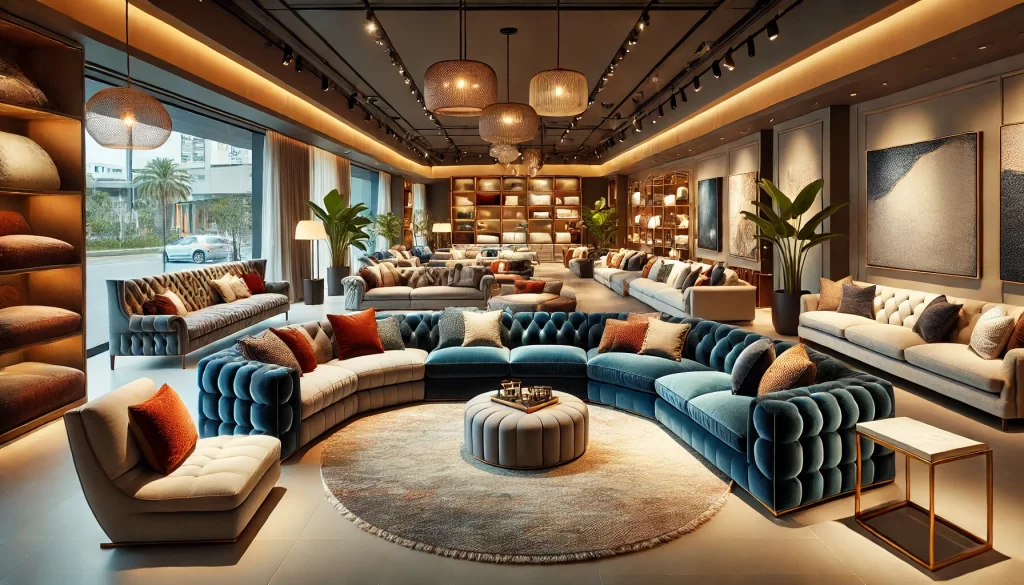Buying and selling furniture professionally can be a lucrative and fulfilling business. Whether you are a professional buyer, seller, interior designer, or restorer, it is essential to understand the nuances of the furniture market.

FAQ on Professional Furniture Buying and Selling
This guide addresses the most common and important aspects of professional furniture buying and selling by answering 20 frequently asked questions, helping you navigate this industry successfully.
1. How do you assess the value of furniture before buying or selling?
To assess the value of furniture, you need to consider several factors, including age, brand, material quality, condition, and rarity. It’s also helpful to consult professional appraisers or market price guides and compare similar sales on specialized platforms.
2. What are the main sales channels for professional furniture?
The primary channels include physical furniture stores, online platforms (like Etsy or eBay), auctions, trade shows, and social media. Each channel has its pros and cons regarding reach, cost, and target audience.
3. What are the best strategies for pricing furniture?
Your pricing strategy should consider the cost of purchase, restoration or reupholstering costs, market demand, and competition. It’s also wise to factor in a reasonable profit margin and adjust for demand and seasonality.
4. What types of furniture are currently selling best?
Vintage and retro furniture, designer pieces, and multifunctional furniture are currently in high demand. Sustainable and contemporary styles, as well as rare collectible pieces, also attract many buyers.
5. How do you know if a piece of furniture is authentic?
To verify the authenticity of furniture, look for manufacturer markings, examine the materials and construction, and check historical documentation. Expert opinions from antique specialists are also crucial for older pieces.
6. What are the main quality criteria for furniture?
The key quality criteria include the sturdiness of the structure, the quality of materials (solid wood, leather, etc.), the finish, and the presence of handmade details. High-quality furniture should be durable and well-constructed, with no visible flaws.
7. How do you choose the right furniture suppliers for bulk purchases?
To choose a good supplier, look for reputation, furniture quality, price transparency, delivery reliability, and warranty conditions. Trade shows are excellent venues to network with potential furniture suppliers.
8. What are the best techniques for negotiating with a seller or supplier?
Negotiation is based on market knowledge, pricing, and respectful communication. Demonstrating long-term interest (if applicable) and being willing to discuss terms like payment deadlines or order quantities can be helpful.
9. How do you estimate the transportation and delivery costs for furniture?
Transportation costs depend on size, weight, distance, and the method of delivery. Companies specializing in furniture logistics can provide quotes. Insurance is also essential, especially for high-value items.
10. What are the common risks when buying used furniture?
Risks include poor quality, hidden defects, pest infestations (like termites), and uncertain authenticity. Always inspect the furniture in person when possible, and try to obtain a return guarantee if available.
11. Should furniture be restored before reselling?
Restoring a piece of furniture can increase its value, especially if it is in poor condition. However, for antiques, restoration may sometimes reduce value if not done correctly. Evaluating restoration costs versus added value is critical.
12. Where can you find interesting furniture to buy?
Sources include auctions, flea markets, second-hand stores, estate sales, and liquidation sales. The internet and social media can also offer great purchasing opportunities.
13. How can you recognize low-quality furniture?
Low-quality furniture often uses composite or poor-quality wood, sloppy construction (like ill-fitting joints), uneven finishes, and lacks stability.
14. What documents are needed for the professional sale of furniture?
Documents include the invoice, a certificate of authenticity (if applicable), terms of sale, and warranty information. For antiques, provenance documentation may also be required.
15. Is it advantageous to sell furniture on online platforms?
Yes, because online platforms allow for broad exposure. However, you must consider selling fees, shipping costs, and competition. Good presentation (quality photos, detailed descriptions) is crucial to attract buyers.
16. How do you handle returns and customer complaints?
It’s important to establish a clear return policy from the start. For complaints, listen carefully to the customer, offer reasonable solutions (refund, replacement, discount), and ensure satisfaction to maintain a good reputation.
17. What are the pros and cons of participating in furniture trade shows?
Advantages include increased visibility, direct contact with potential customers, and professional networking. Disadvantages can include high costs (transport, booth rental, etc.) and the time needed for preparation and participation.
18. How can you minimize furniture storage costs?
To minimize costs, it’s best to maintain fast inventory turnover. Choosing a suitable and secure storage space is essential. Organizing to maximize space use and negotiating costs with warehouses can also help.
19. What criteria should you consider when choosing a furniture transportation company?
Criteria include reputation, insurance, cost, punctuality, and specialization in fragile or high-value furniture. It’s also important to verify if the company provides on-site installation services.
20. How important is an online presence for a professional furniture seller?
An online presence allows you to reach a wider audience, stand out from the competition, and facilitate sales. A well-designed website with high-quality photos and detailed descriptions, along with a social media presence, is crucial for attracting modern buyers.
Conclusion
Professional furniture buying and selling requires in-depth market knowledge, attention to quality and authenticity, and strong negotiation and marketing skills. By following best practices and being attentive to customer expectations, it is possible to build a successful and sustainable business. The key to success lies in continuous research, adapting to trends, and emphasizing the quality and provenance of the furniture.
